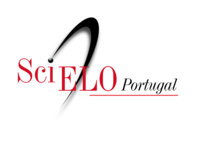Jugular bulb abnormalities and their surgical implications
DOI:
https://doi.org/10.34631/sporl.716Keywords:
jugular bulb, middle ear, diverticulum, bleedingAbstract
Introduction: Jugular bulb abnormalities (JBA) are mostly asymptomatic and present as an incidental finding during surgical exploration. We report four cases of JBA in patients undergoing middle ear surgery.
Cases Reports: A miringotomy was performed in a 7-year-old child with a bluish mass behind the tympanic membrane. CT and MR revealed a high-riding jugular bulb. The second and third patients underwent exploratory tympanotomy. One case, on raising the tympanomeatal flap, we verified a jugular bulb protruding into the mesotympanum, nearby incudostapedial joint. This finding let us to abort the operation because of a jugular diverticulum. The other consisted in a stapedotomy, whose CT revealed a high-riding jugular bulb accompanied by a medial diverticulum. The last patient underwent mastoidectomy for cholesteatoma. While entering the middle ear, a high jugular bulb bleeding occured. It was controlled by applying Surgicel®.
Conclusion: JBA diagnosis becomes challenging before operation, leading to an inadvertent entry into the venous system.
Downloads
References
Wadin K, Thomander L, Wilbrand H. Effects of a high jugular fossa and jugular bulb diverticulum on the inner ear. Acta Radiol Diagn (Stockh) 1986;27:629–636.
Ichijo H, Hosokawa M. Shinkawa H. The relationship between mastoid pneumatization and the position of the sigmoid sinus. Eur Arch Otorhinolaryng 1996;253:421– 424.
Rausch SD, Xu WZ, Nadol JB Jr. High jugular bulb: implications for posterior fossa neurotologic and cranial base surgery. Ann Otol Rhinol Laryngol 1993;102:100–107.
Hourani R, Carey J, Yousem DM. Dehiscence of the jugular bulb and vestibular aqueduct: findings on 200 consecutive temporal bone computed tomography scans. J Comput Assist Tomogr 2005;29:657–662.
Atilla S, Akpek S, Uslu S, Ilgit ET, Isik S. Computed tomographic evaluation of surgically significant vascular variations related with the temporal bone. Eur J Radiol 1995;20:52–56.
Weiss RL, Zahtz G, Goldofsky E, et al. High jugular bulb and conductive hearing loss. Laryngoscope 1997;107:321–7.
Vachata P, Petrovicky P, Sames M. An anatomical and radiological study of the high jugular bulb on high-resolution CT scans and alcohol-fixed skulls of adults. J Clin Neurosci 2010;17:473Y8.
Friedmann DR, Le BT, Pramanik BK, Lalwani AK. Clinical spectrum of patients with erosion of the inner ear by jugular bulb abnormalities. Laryngoscope. 2010;120:365-372.






